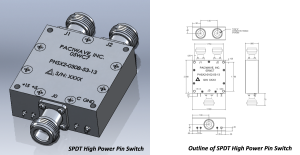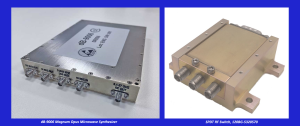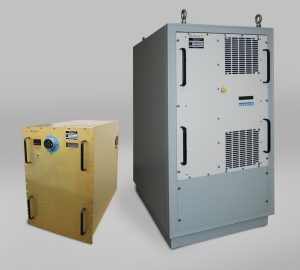Interview with Gary Spaulding, Chief Operating Officer, dB Control
MPD: Millimeter wave frequencies will be used for cellular communications for the first time in 5G. What challenges and opportunities does this present for the microwave industry?
GS:
dB Control is closely watching the millimeter wave space — especially as it relates to wireless communication, radar and electronic warfare. We see opportunities for RF and microwave companies that want to support 5G with hardware and software solutions. In fact, there are also ways the microwave industry can help define 5G network standards (i.e., ensuring compatibility with 4G).
MPD: What RF and microwave technologies do you feel will have the greatest impact in our industry overall between now and 2020?
GS:
Unmanned aerial vehicles (UAVs) will continue to have significant impact in both the defense and commercial sectors. Even in pop culture, consumer and commercial UAVs have altered online deliveries and changed how social influencers document their lives in videos (i.e., YouTube vlogs). We’ll also continue to see more UAVs used in emergency response, natural disaster detection and scientific research. With this increased demand comes the need for smaller, lighter products and subsystems. Fortunately, dB Control has a range of proprietary high-power amplifier solutions for UAVs — all with industry-leading SWaP RF/microwave and millimeter wave hardware. I recently read an article that called “drones” (as civilians call them) the “mega-trend” that’s here to stay and evolve. I couldn’t agree more.
MPD: After years of hype and little to show for it, IoT networks are actually being deployed in a variety of applications. Do you believe IoT is a major opportunity for the RF and microwave industry? If so, why and if not, why not?
GS:
When you think of the communication between soldiers and the massive amount of tactical data shared, it’s clear that IoT will become more prominent in the defense industry over the next decade. For example, capturing high-resolution images and high-definition video from an unmanned aerial vehicle (UAV) requires gathering and processing very large amounts of data. This, in turn, requires sophisticated electronic systems that use a stunning amount of power and connectivity. Fortunately, this can be achieved using very high-power, high efficiency TWTAs and MPMs. But for IoT to work well in the RF and microwave industry, it needs to be closely regulated.
MPD: We believe that the defense industry will retain its crucial importance to the RF and microwave industry regardless of overall DoD budget constraints. Do you agree with this statement? Either way, please explain your reasoning.
GS:
dB Control has always believed that the defense applications we work on would remain critical far into the future. Take electronic warfare (EW) for example. The global EW market alone is expected to reach $25.36 Billion USD by 2021, according to the Electronic Warfare Forecast. In EW operations, threat emitters must be able to detect potential enemy radar and respond accordingly. These enemy radars will only get more sophisticated — which is why we aim to remain several steps ahead at all times, technologically speaking.
Originally published in the December 2017 issue of MPD: http://www.mpdigest.com/2017/12/27/vftt-db-control/






